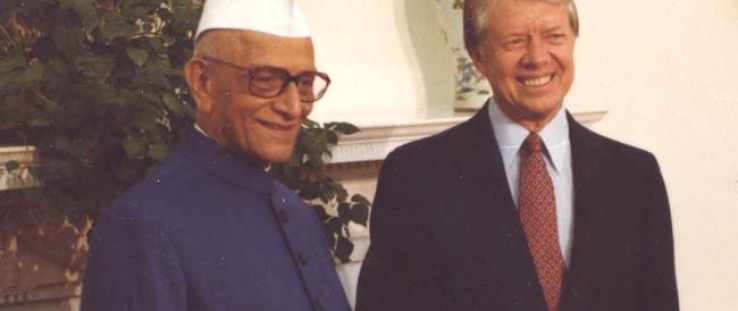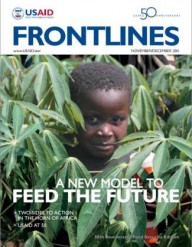 India Prime Minister Morarji Desai with U.S. President Jimmy Carter
CREDIT: U.S. ARMY SIGNAL CORPS
India Prime Minister Morarji Desai with U.S. President Jimmy Carter
CREDIT: U.S. ARMY SIGNAL CORPS
 India Prime Minister Morarji Desai with U.S. President Jimmy Carter
CREDIT: U.S. ARMY SIGNAL CORPS
India Prime Minister Morarji Desai with U.S. President Jimmy Carter
CREDIT: U.S. ARMY SIGNAL CORPS
During the second Bush Administration it became fashionable in the State Department to talk about “transformational diplomacy.” Secretary of State Condoleezza Rice defined the term in January 2006 this way: “To work with our many partners around the world to build and sustain democratic, well-governed states that will respond to the needs of their people—and conduct themselves responsibly in the international system.”
Long before some Foggy Bottom wordmeister thought that one up, as assistant administrator for Asia, I was involved with an event that can best be described as demonstrating “transmigrational diplomacy.”
The story begins in 1977 when the Carter Administration determined to reestablish a foreign assistance relationship with India. Secretary of State Henry Kissinger had broken off the aid relationship in 1971 in retaliation for the Indian military backing Bangladesh’s break from Pakistan.
President Jimmy Carter and his top advisers were India-philes but in the Congress there was an evident reluctance to renew development aid to India. The word from Capitol Hill was that assistance programs could be resumed, but the Indian Government would have to formally request them.
On the Indian side, officials were still miffed about the earlier cutoff. The word from New Delhi was that no request would be forthcoming and that the United States would have to take the first step and offer aid; only then would the government decide whether to accept it.
In other words, it was a perfect dilemma.
Into this situation I stepped, along with the new head of USAID, John Gilligan. One dark and rainy night in 1978, the two of us were whisked in a U.S. Embassy car to the New Delhi residence of the India Prime Minister Morarji Desai. Desai was a longtime politician and part of Mahatma Gandhi’s inner circle. He had broken with the Indian National Congress Party to found his own political grouping and served as prime minister from 1977–1979.
Greeted by Desai’s aides, we were strictly advised that our meeting would be no longer than 15 minutes—and that we would be timed to the second. Soon after we were seated, Desai appeared without any aides and bid us be comfortable. I found that difficult given the standoff that the meeting might produce. Gilligan was more relaxed, however, and began a genial theological discourse comparing Hindu and Christian religious thought. Desai responded enthusiastically and soon the two were deep in an animated conversation on comparative religion. Five minutes went by.
The conversation began to focus more particularly on the transmigration of souls. At some length Desai explained the Hindu view; Gilligan responded with the Christian perspective, again in detail. They saw some similarities. Another five minutes flew by.
I could feel the cold sweat beginning to run down my sides. Transmigration continued to dominate the dialogue as both participants seemed to be warming to the subject even more intensely. A voice inside my head began to shout: “Time, time, time!”
Barely a minute remained when Gilligan broke off the theological discussion and asked abruptly: “If the United States were to offer foreign assistance, would you be willing to take it?”
In a Zen-like response, Desai replied, “If we were willing to take it, would you offer it?”
Barely perceptible affirmative nods ensued simultaneously on both sides.
Satisfied that the Gordian knot had been cut, Gilligan immediately stood up, shook Desai’s hand, told him we would meet with his top government officials the next day to hammer out the details, and we left. Fifteen seconds remained. We did not look back.
We resumed a full-fledged program to India in a matter of weeks, which continues to this day. Transmigrational diplomacy had proven its worth.









Comment
Make a general inquiry or suggest an improvement.